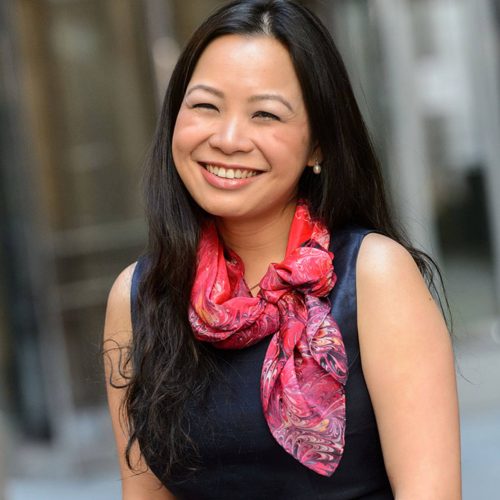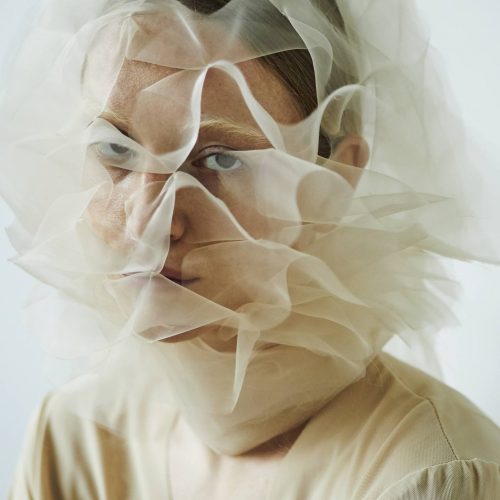Eco Fashion Week Australia, a different concept
Eco Fashion Week Australia turned off the lights of its second edition on November 21st. The concept is different. Its creative differs from the Fashion Weeks we’re used to. It focuses on empowering the local artisan community and some international designers who identify themselves with the movement. It also focuses on the beauty of local weavings and Aboriginal art. Glamor and business aren’t the top priority. There’s desire. There’s passion. But is it enough?
Australians buy 27 kg of clothes per person per year, “and most of the new clothes are now made of synthetic fibers derived from petroleum” - says the sustainability consultant Jane Milburn. They are the second largest new textile consumers after North Americans, who buy 37 kg per person per year, and lie ahead Western Europeans, who buy 22 kg, while the average consumption in Africa, the Middle East, and India is of only 5 kg per person.
An Ecological Fashion Week can help, a lot, to create awareness and accelerate a change in fashion consumption in Australia. Something both necessary and urgent which composes the main objective of Eco Fashion Week Australia.
Eco Fashion Week Australia 2018
Last November 14th Eco Fashion Week Australia WA opened the curtains of its second edition. In just two years, it has managed to position itself as the ecological fashion show with the largest number of participating designers from around the world.
After the Port Douglas’s show, EFWA arrived in Fremantle, a coastal town near Perth. The place chosen for the event, the Bank Oval Community, lies far from the glamor of the locations where fashion weeks are usually held around the world. It’s a soccer field with a bar-restaurant where the inhabitants of Fremantle usually go on Saturdays to gamble. In the front row of the catwalk – perfectly designed to show the collections of about 30 designers – there are no celebrities, no retailers. Nor do we see the local press. "It's a different catwalk" - explains Zuhal Kuvan-Mills, event director. "Here it’s the farmer who sits in the front row. They are the important ones, along with academics, the international press and bloggers (...) We don’t want “high heels” or "postures", we want to create a community, we want to establish a dialogue between the farmers and the press". “And what about business?” - we asked - “the participating designers will want to sell... and, without buyers there are no sales...". "It's our second edition, little by little" - Zuhal answers.
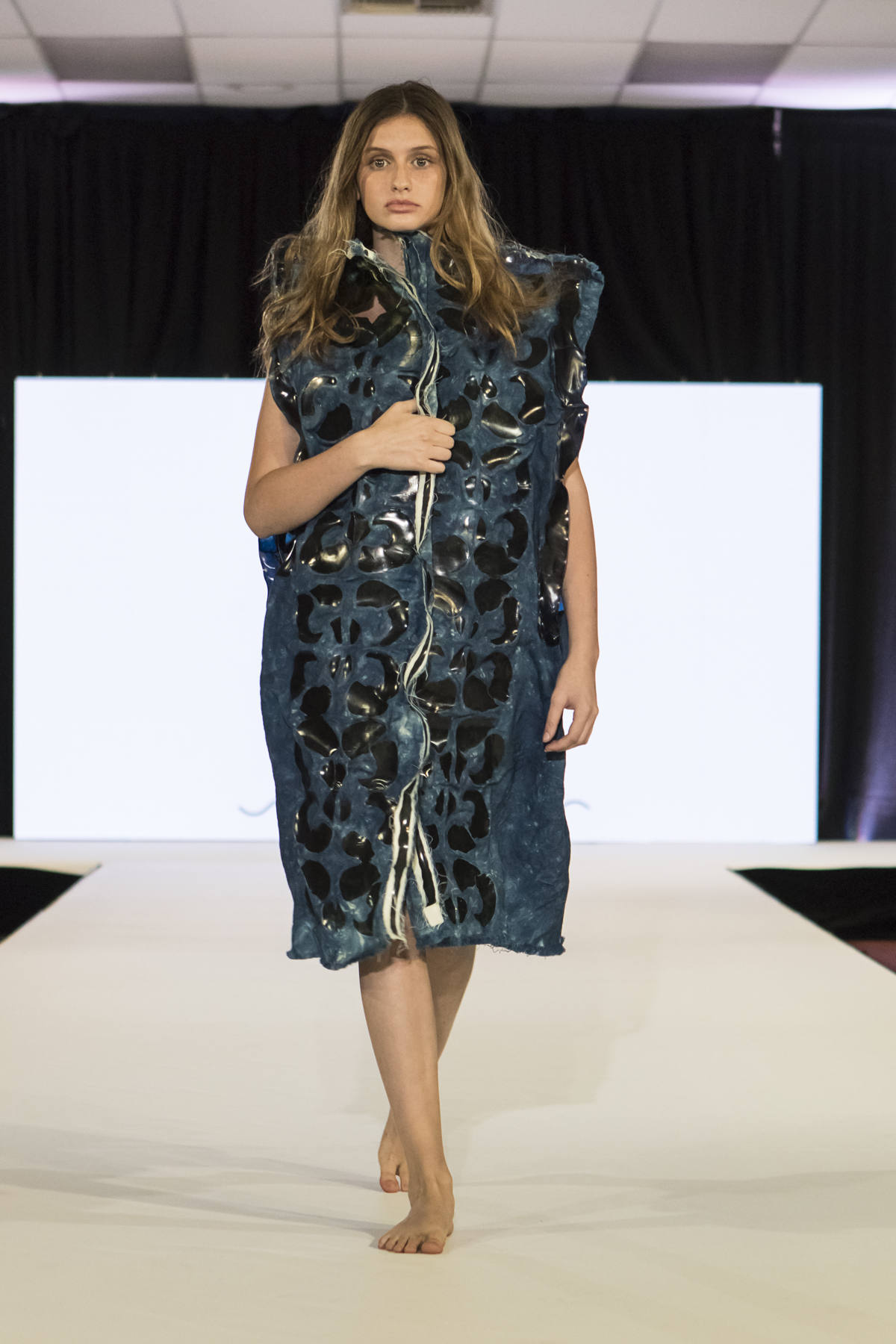

Studio Membrane
The music plays. Young girls and boys from the area begin to walk. They aren’t professionals, but that is also part of the concept in which the event director believes. “We want to show real fashion in real people, of all sizes". We assume that the lack of investment has a lot to do with it. “It takes a lot of money. Everything does. It isn’t easy” - confirms Zuhal Kuvan-Mills.
That’s how five days of shows began, showing the indisputable beauty of aboriginal art impregnated in natural fabrics such as organic cotton, alpaca and wool from the region. We also appreciated the great result of a natural textile experimentation, which is respectful with the environment, slow, oxygenated, and in some cases, sublime. However, unfortunately, the beauty faded in some collections, due to improperly finished garments, unfinished patterns, unsown hems, loose threads... “Maybe it would be a good idea to decrease the number of styles in the collections and use that time to perfect the clothes that designers show on the catwalk” - we think. Less is more.
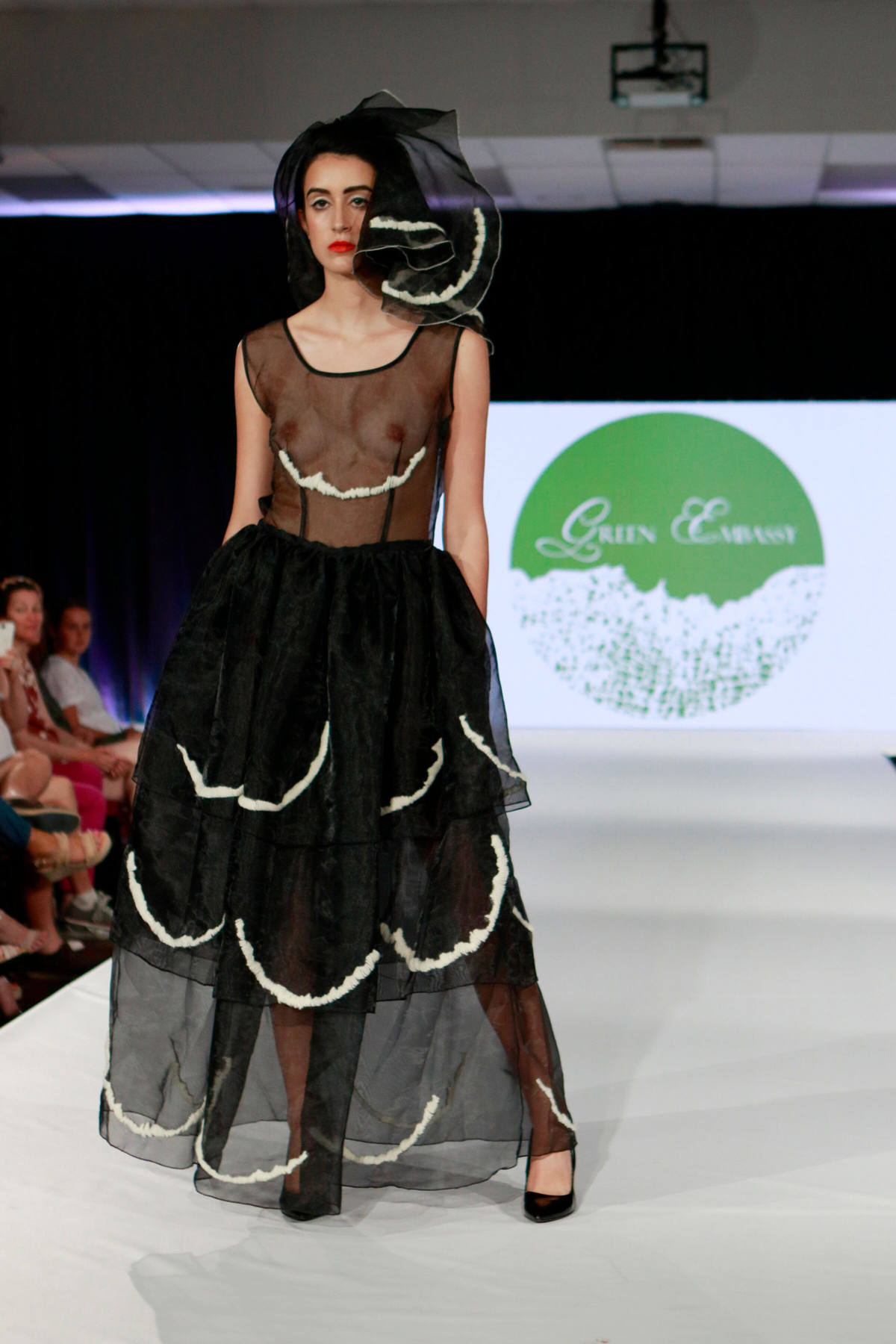
Green Embassy
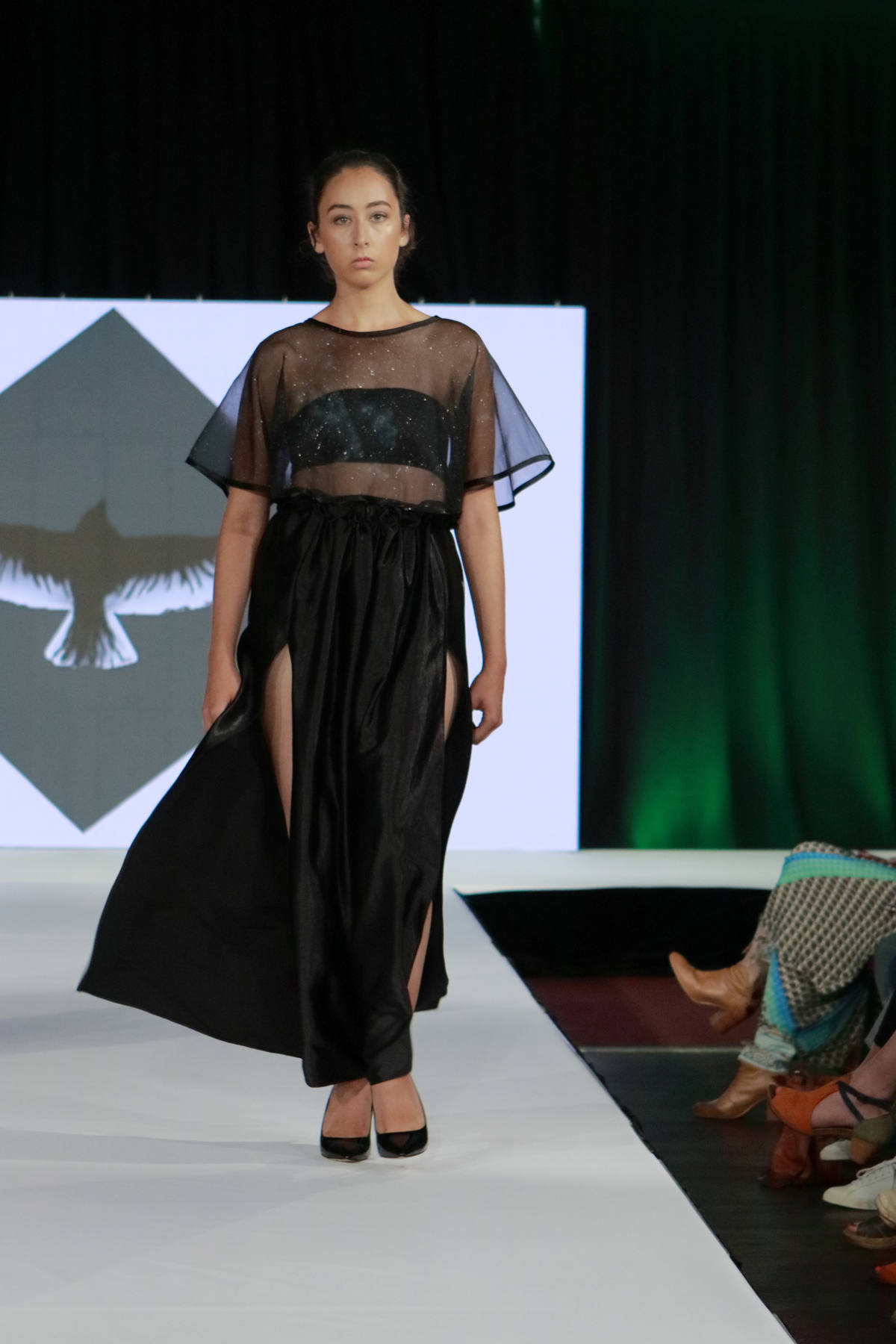
Skylark the Label
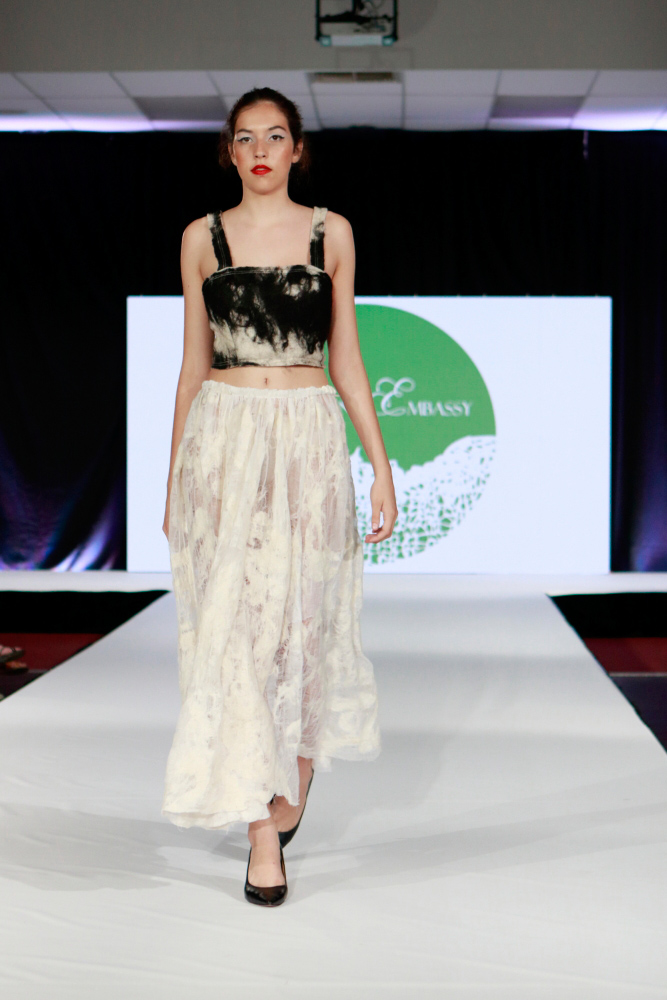
Green Embassy
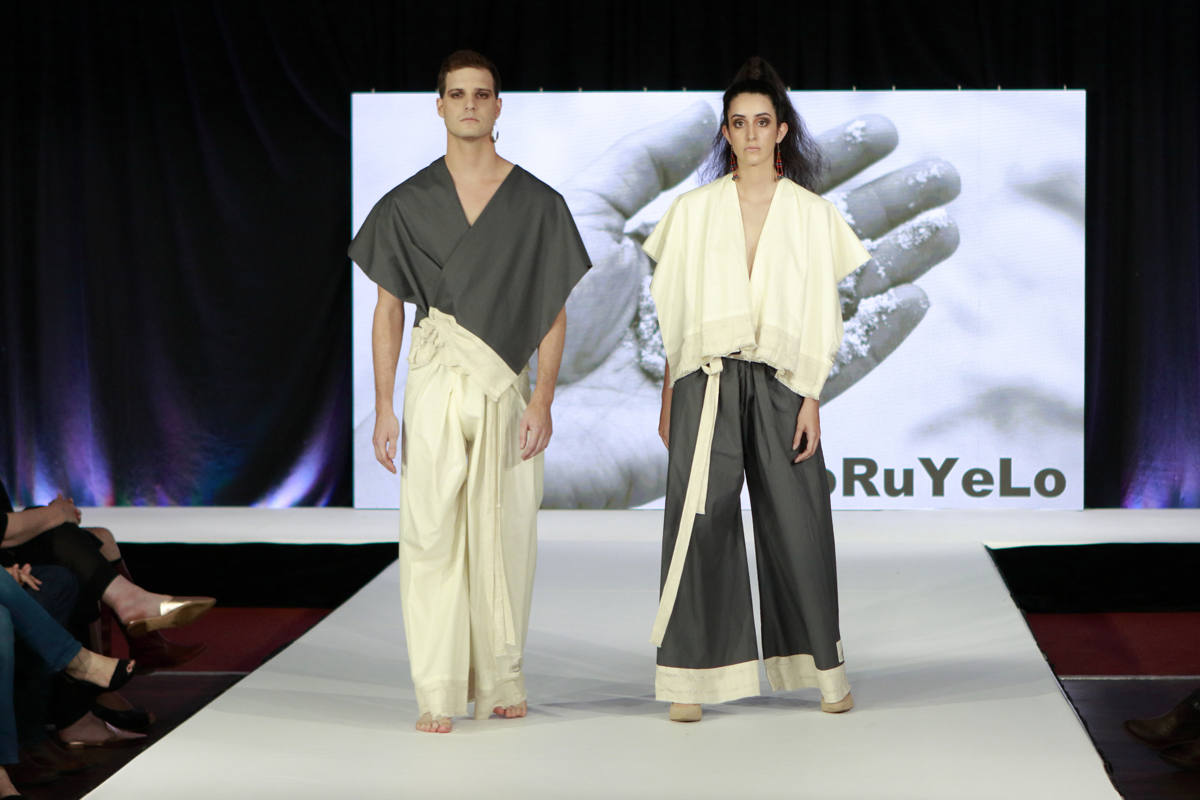
Noruyelo
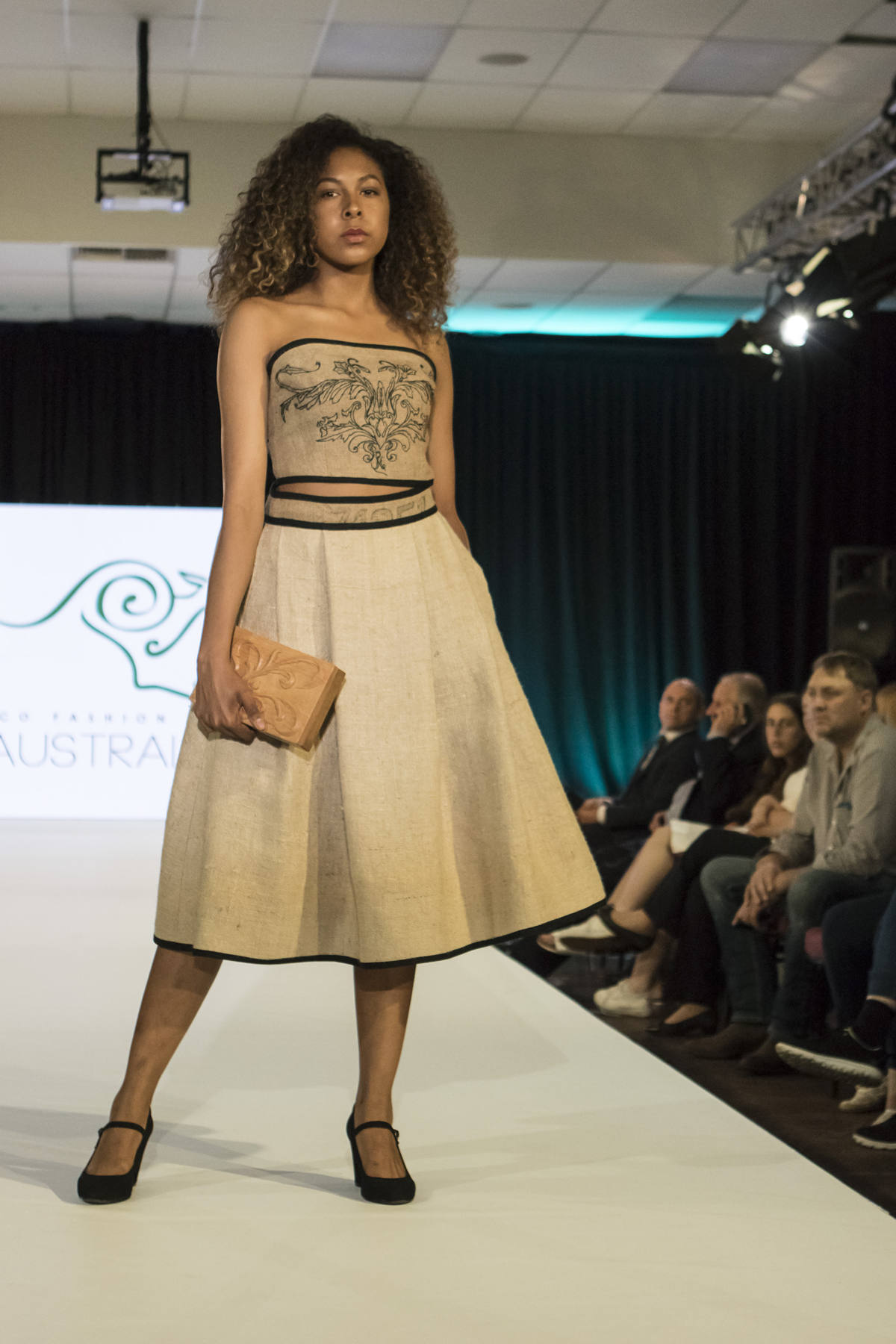
Sylvia Calvo BCN
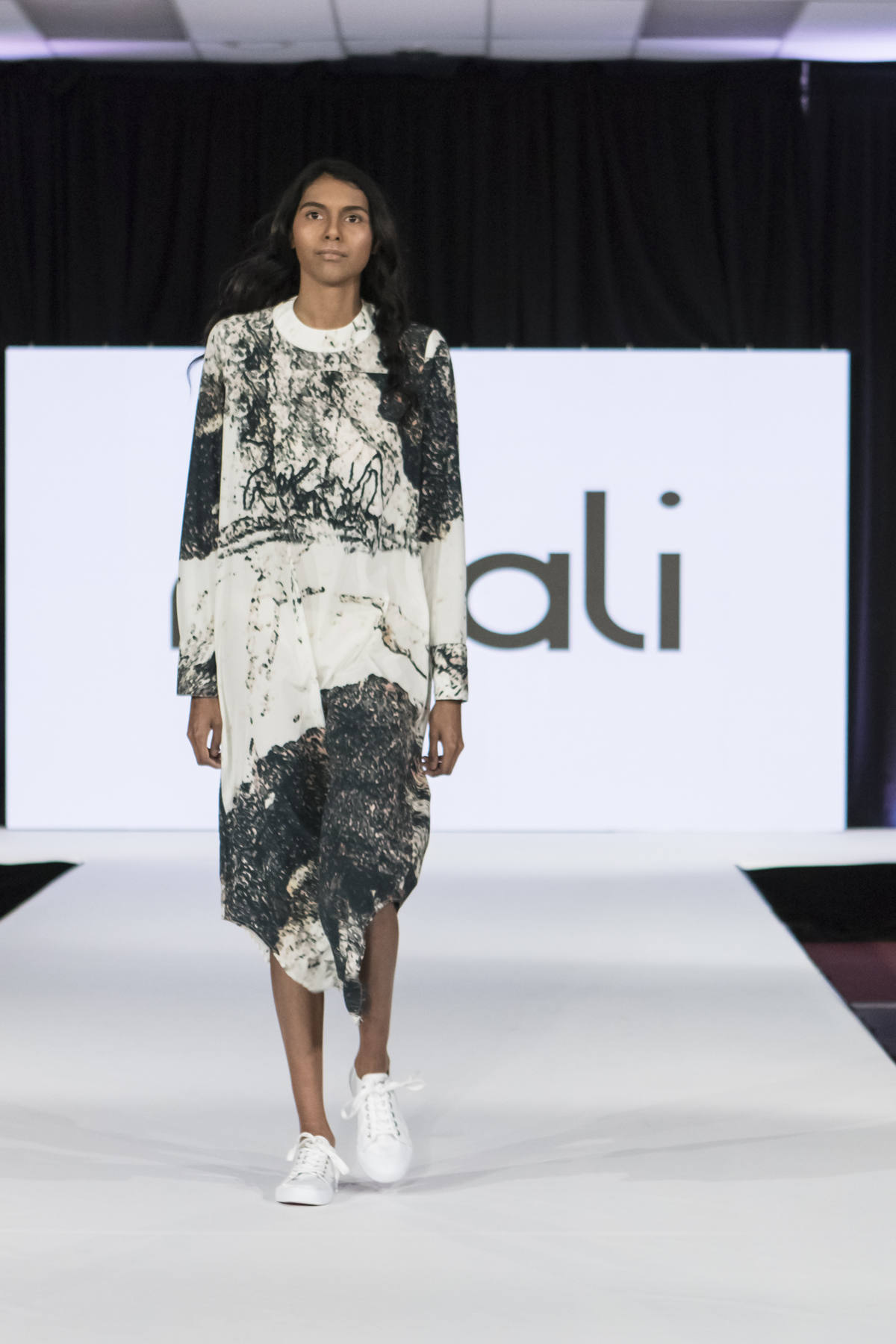
Ngali
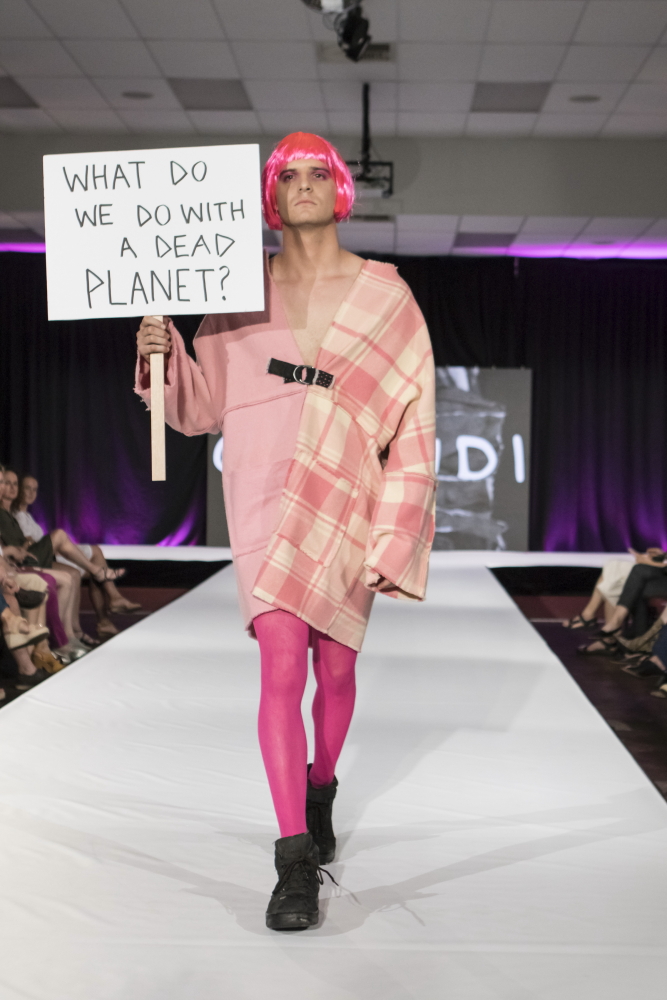
Claw.di
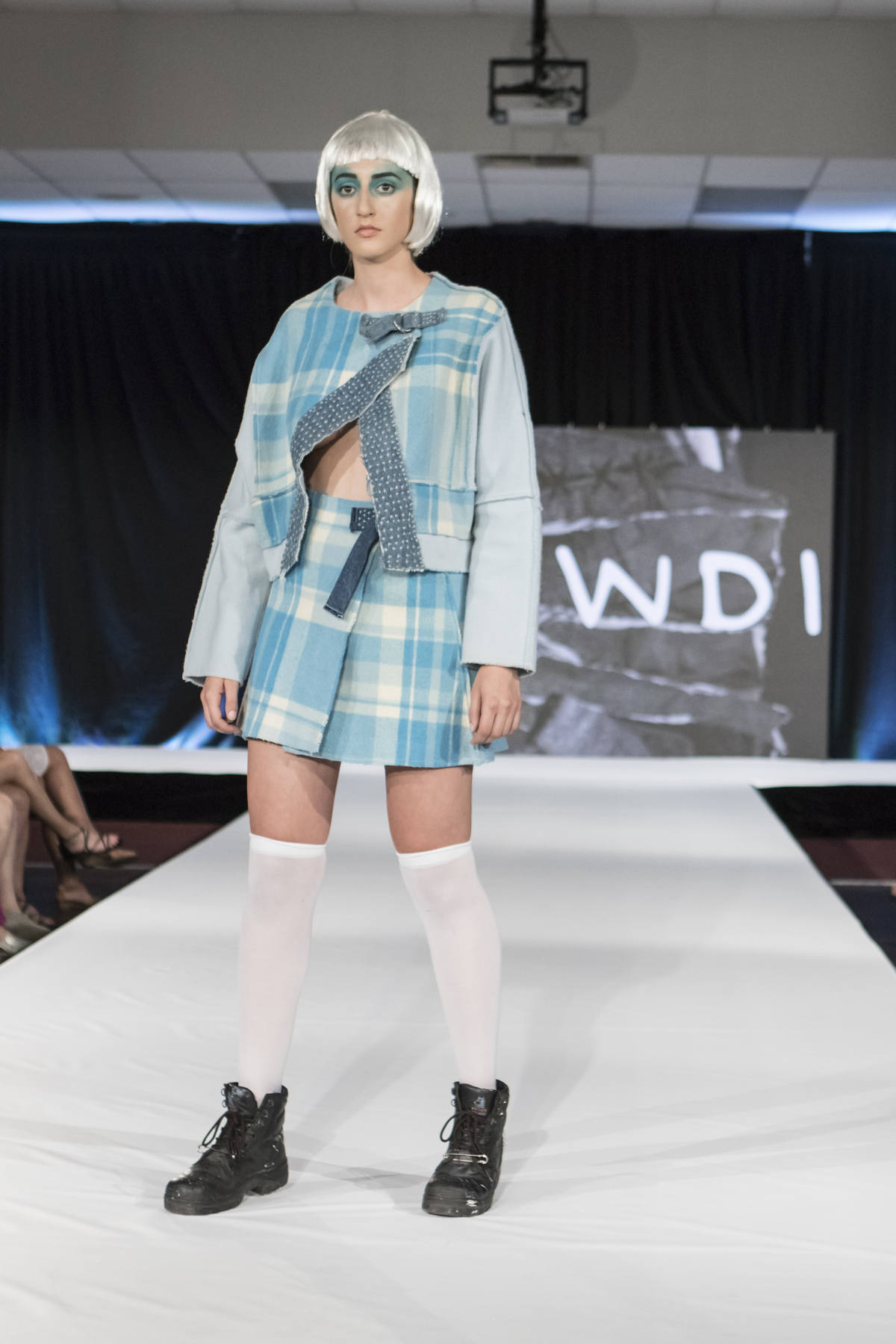
Claw.di
Circular, experimental and local creativity
Among the designers there are some that we really liked. Studio Membrane stands out in the calendar. The Japanese designer once again shows that fashion is an art and, as an art, it must break through the limits imposed by commercial fashion. He presents an oversize collection, with garments created with layers. The female body is hardly seen. Gelatinous membranes, created by exposing wool to fire, join the fabric to compose unique, futuristic and wild-looking pieces. This designer has a lot of future. Yes, we can imagine him in Paris.
Simple and well structured, with a minimalist and very successful styling, Sylvia Calvo BCN collection is impeccable. Very feminine and elegant, “Barcelona, T'stimo” presents the new eco-conscious cosmopolitan woman through classic patterns. There’s no better upcycling than the one that doesn’t allow us to guess the fabric’s previous life. Sylvia Calvo does it. There’s no trace of the coffee bag. The rustic becomes chic, the material’s rigidity creates the designs’ volume, and its union with alpaca camouflages it.
Talent in sight! The designer Claw.di has just graduated. Her first professional step is done in the world of sustainable fashion. She purchased unique original Australian and New Zealand wool blankets at an op-store to create a collection of coats, sweaters, jumpsuits and colorful pants.. The patterns are daring but wearable. The staging recreates what we’ve seen in parades around the world, the revolution, a social denunciation, in this case focused on a specific message: save the planet from our trash. Her message catches us. But there’s a detail that doesn’t fit: the plastic wigs in the styling were a mistake.
Green Embassy’s fabrics are an art-work. Organza silk, organic cotton, alpaca and merino wool have been mixed manually to create exclusive compositions in black and white. The lightness of the fabrics creates a unique harmony. We really loved the fabrics.
Noruyelo's concept also deserves our recognition, mainly because of the design of its asymmetrical dresses. Using reused textiles rescued from garbage dumps, the firm creates unique garments that can be worn in several ways.
With 23 years, the designer of Fabric of Nature is promising. Besides composing precious fabrics thanks to manual dyeing with eucalyptus leaves, she presents interesting patterns, well finished, for the sophisticated woman who is also committed to the art of nature.
The evolution of Skylark the Label is also indisputable. This young designer’s third collection, Nordlys, embraces a timeless aesthetic created through silks, wool, cotton and recycled polyesters discarded by local companies.
We also liked Ngali's “athleasure”: very European style. The Australian designer presents the talent of a group of emerging indigenous artists who work together to produce art, clothing, collectibles and household items. Her inspiration is Gum Trees, a fascination for the power and true beauty of all trees.
In addition to all these collections, we want to highlight the beauty of the aboriginal prints found in the Ku'arlu Mangga Nahanda Community Art Group’s designs, also those from Betty Spoke.
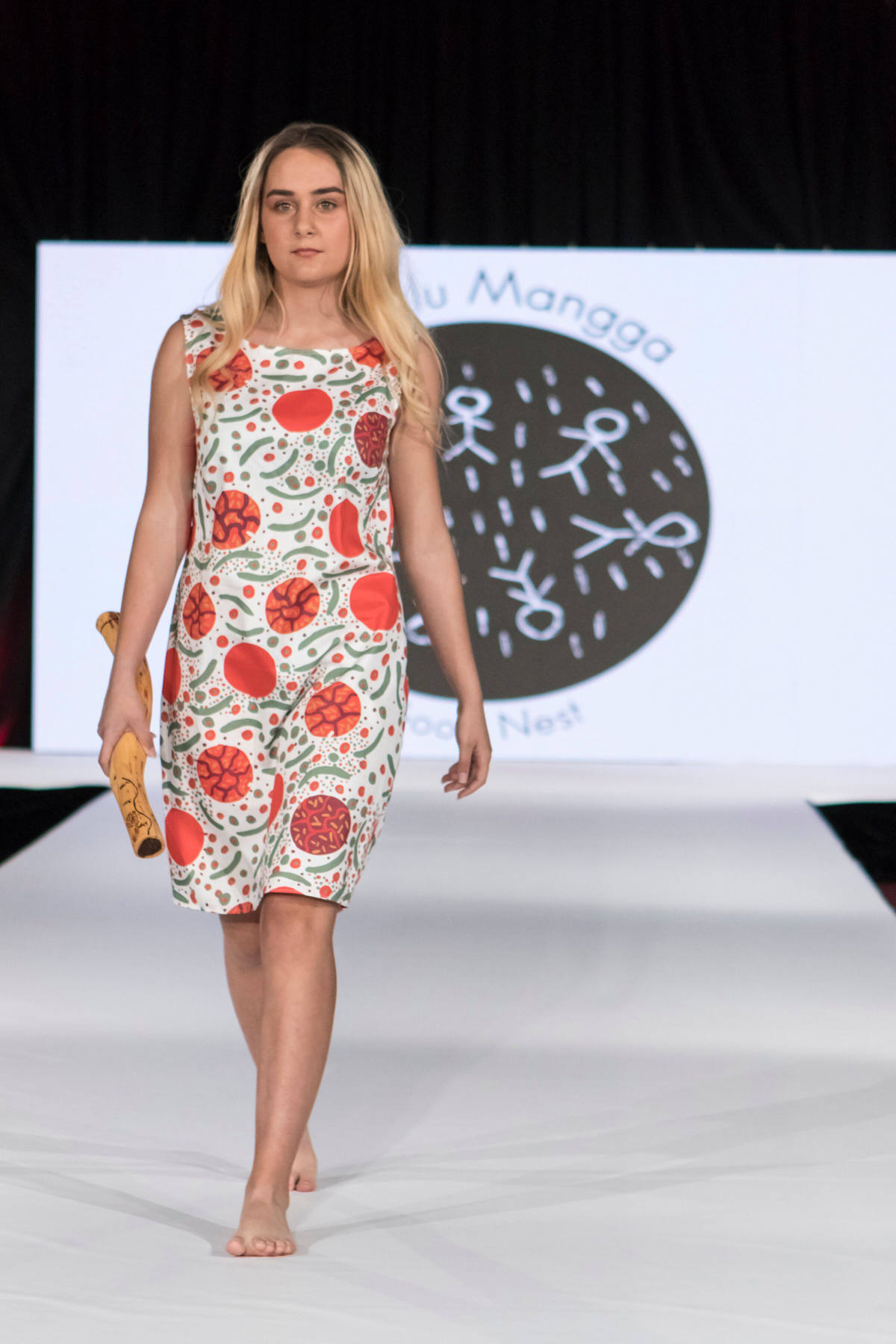
Ku'arlu Mangga
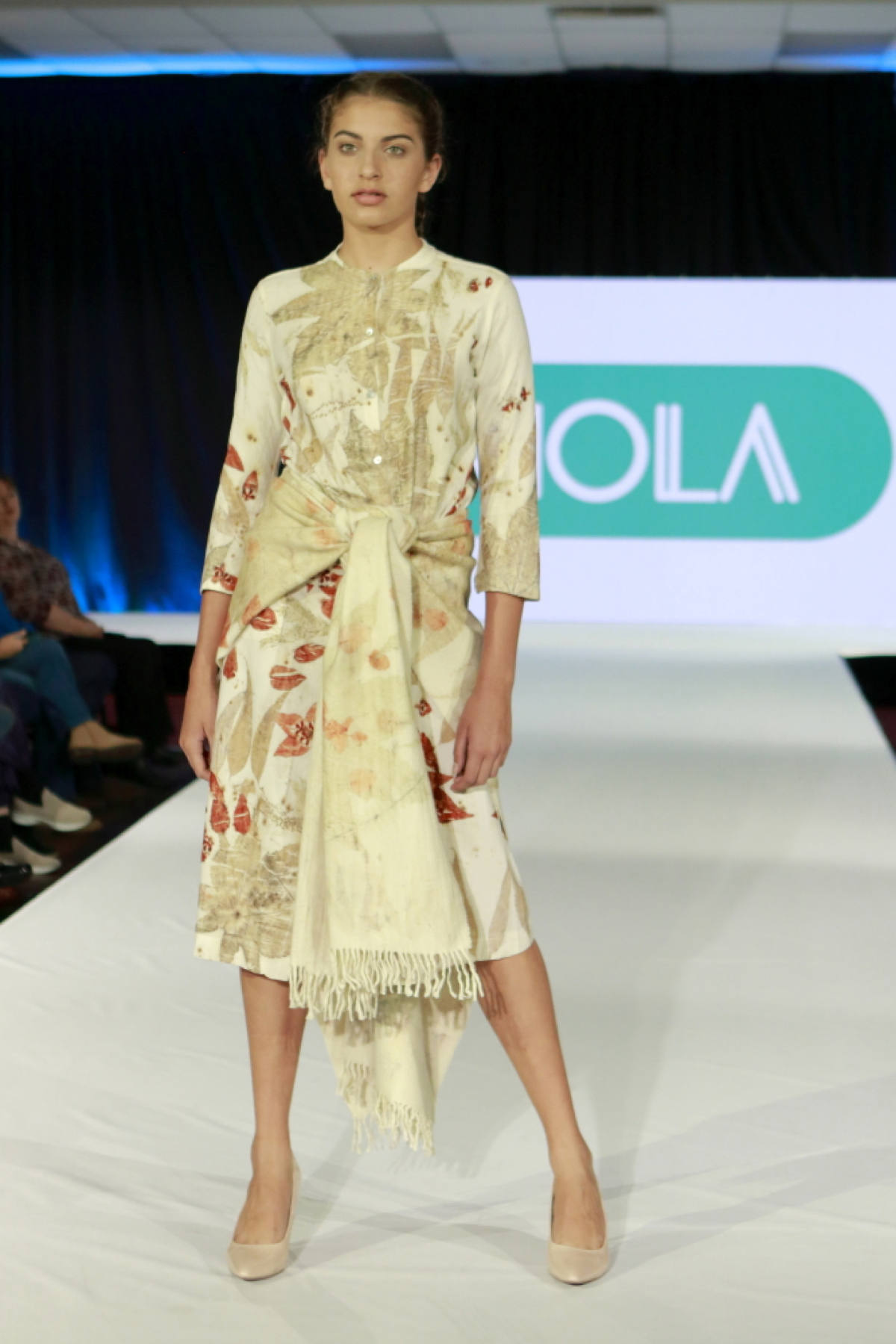
Mola
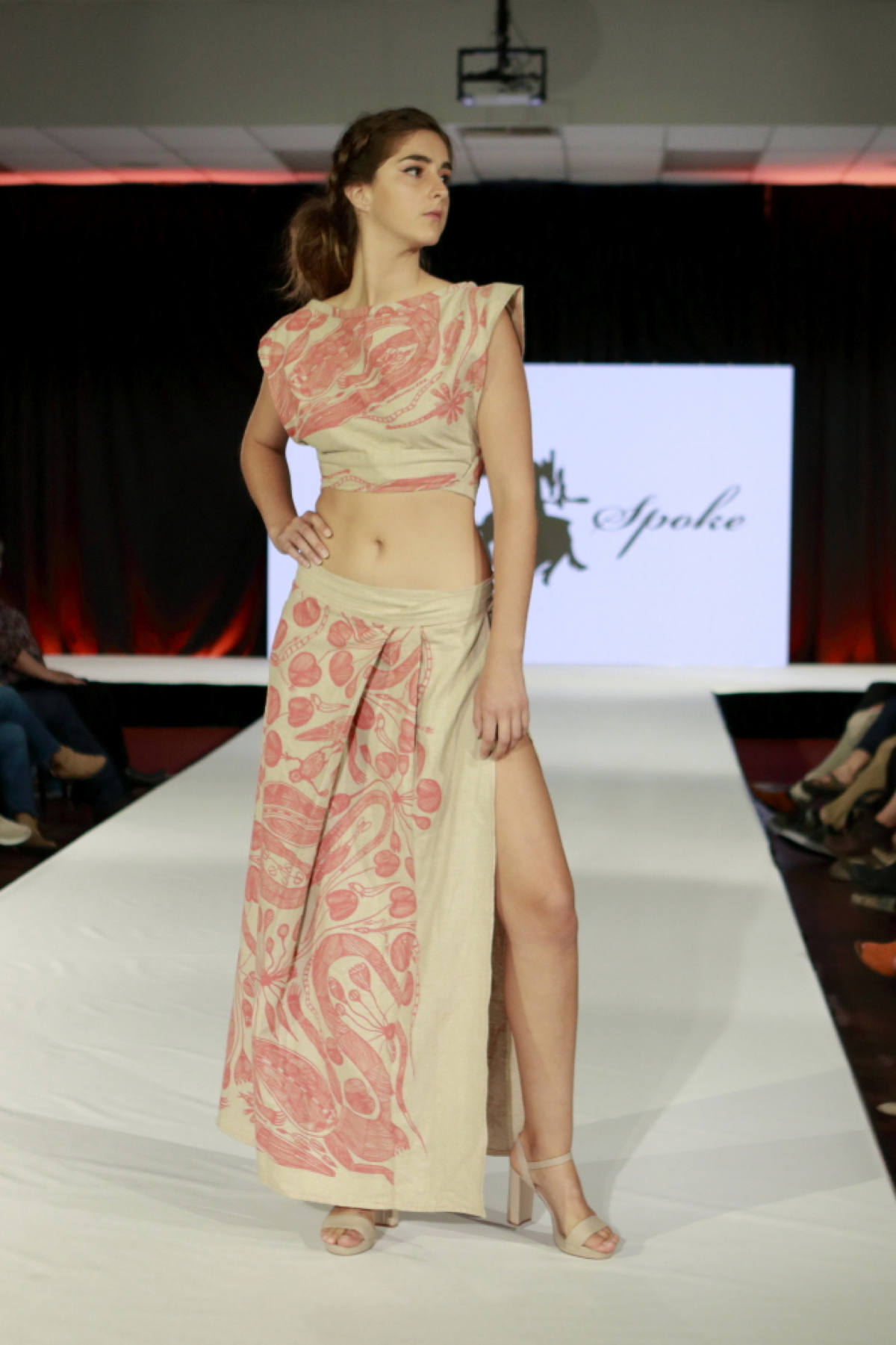
Betty Spoke
Intentions and wishes
The lights go off. The audience applauds. Models, designers, stylists, mothers, technicians and organizers embrace on stage. “You see? This is the image. It is all about empowering the community that wants to change the world” - Zuhal tells us excitedly. In these five days we’ve seen girls and boys growing up on the catwalk, among them, Tia, deaf with cerebral palsy and intellectual disability who want to become a model (Bravo!, Tia, she made a good job!!!) We’ve seen designers trembling with excitement. Fremantle inhabitants applauding without rest amongst the public... Certainly, Zuhal is empowering this community, a community that puts idealism over economic relevance, that cares about our Earth. We decide to ask their opinions to some of the experts who composed the panel of the Summit held during the Eco Fashion Week.
To Jeff Hansen, Managing Director Sea Shepherd Australia, "It was really interesting to come today and listen to other speakers. When you work in conservation, you are so busy in doing what you are doing, that you never think about how big it is and that you should share it with other people... When I came here and listened what other people is doing, that gived me hope, because there is this movement going on to build a sustainable planet. The biggest thing that comes out of Eco Fashion Week Australia is inspiration and hope. Eco Fashion Week Australia is bringing all this people together. So I think one day it would be a big sustainable environmental festival bringing everyone together".
Sass Brown, Founding Dean of the Dubai Institute of Design and Innovation and author of the books "Ecofashion" and "Refashioned", declared to Luxiders Magazine: "I think it is a fledgling undertaking still finding its feet that shows a lot of promise. There was a lot that was worthwhile, such as the range of speakers that participated in the summit. I particularly liked the breadth of inclusivity with Sea Shepard, Fibershed, Jane Milburn and Vogue Australia. I think there is enormous value in getting such a diversity of representation around a table and would love to see the talks broaden into workshops and conversations on how we collaborate, share and move the agenda forward. I think we have a lot to learn from each other that would be highly beneficial. I think it was misnamed as Eco Fashion Week Australia, as fashion was not really part of the focus of the event, including the fashion shows, which were far more about a celebration of slow practice and in many cases local economy. I was also a little confused as to who the fashion shows were aiming at, as they did not seem to have a commercial focus, which is usually the main interest of designer participants. I am really torn saying this particularly in writing as I think we need to encourage and congratulate each other on all that we do to make positive change. However honestly has always been a value I hold dear, and think that sometimes we support each other best by being honest and critical".
Marina Chabhoune, founder of the Sustainability Consultancy Beyond Fashion, declared: "What I have learned in this 10 days is that Australia has a very strong focus on thrift shopping. I see Eco Fashion Week Australia shows are a very nice aproach to value things which have been already worn. Here there is also a strong focus on ethically made, made in Australia, lovely made, which is very nice and very important because Australia is quite far away. It is very nice to see how production is happening here, how designers are sourcing here. I also appreciate the fibers I found here -alpaca, merino and wool from Australia- and I think it is nice to see the diversity of the brands on the catwalks".
Indeed, we’ll follow the evolution of Eco Fashion Week Australia closely. We are sure that, over time, Zuhal will be able to integrate all the necessary components into her Business Plan so that beyond creating a local community, Eco Fashion Week Australia can become an event which promotes eco fashion Designers all over the globe and attracts fashion buyers looking for new eco fashion collections. We really wish it! We really need it!
+ info: Eco Fashion Week Australia

